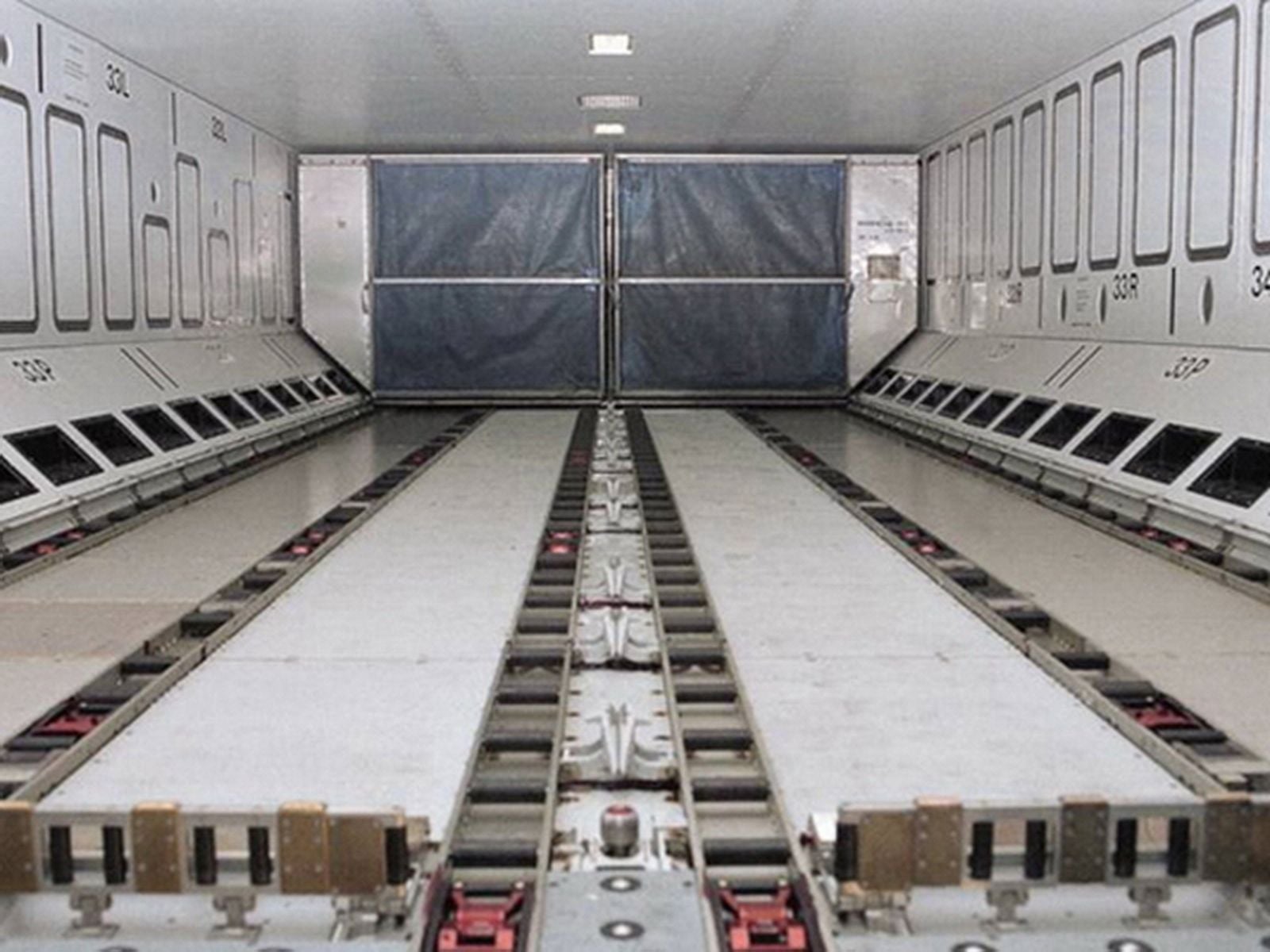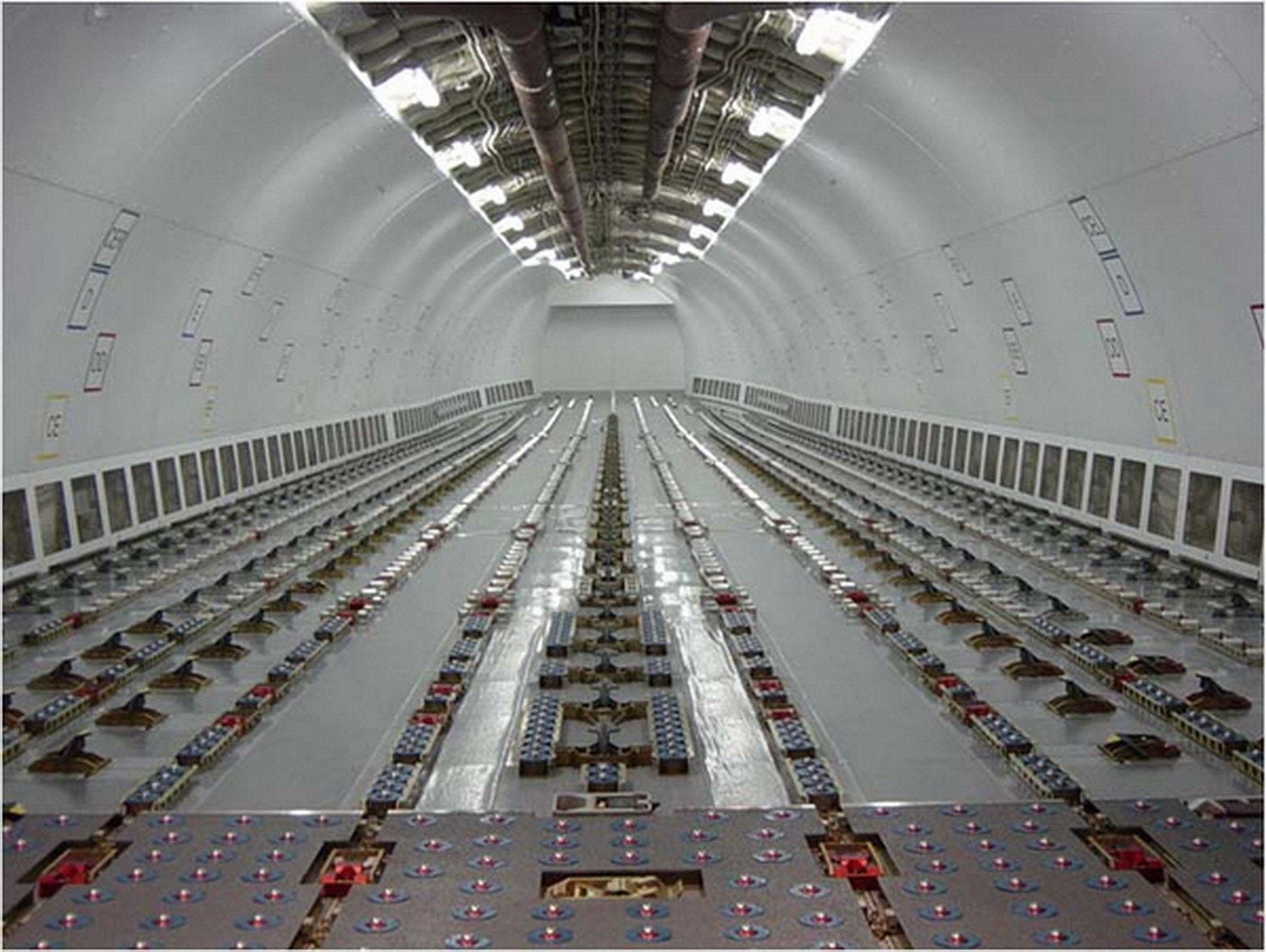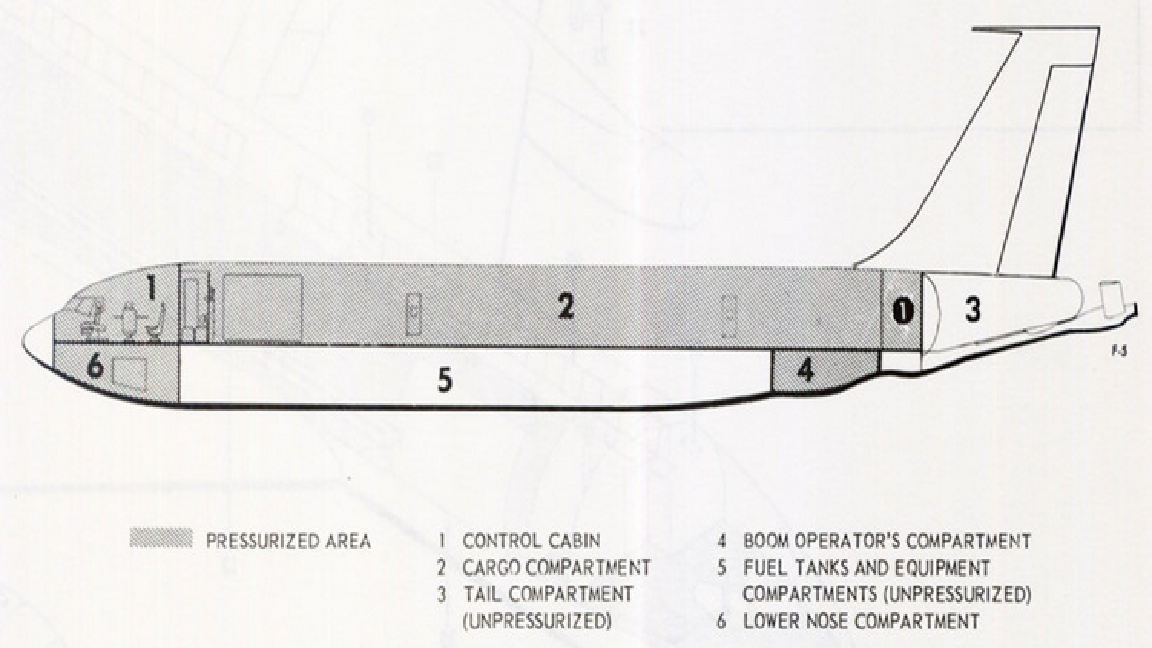More KC-46A woes....
Join Date: Aug 2014
Location: New Braunfels, TX
Age: 70
Posts: 1,954
Likes: 0
Received 0 Likes
on
0 Posts
Maybe NG and Airbus "took a view" that it was not going to be viable and "let" good ole Boeing to suffer all the grief and hassle that has proven to be the case. As for using very very old engines, makes me wonder if GE decided that they did not wish to support their old design CF6 for many more years to come which left only PW.
Let's face it, they would have only chosen an American built engine after all the PR "moaning" etc that went on when Boeing did not win in the earlier "contests".
Join Date: Aug 2014
Location: New Braunfels, TX
Age: 70
Posts: 1,954
Likes: 0
Received 0 Likes
on
0 Posts
The fuselage is so large that the main cargo door can swallow a heck of lot as standard - the MRTT modifications do not change the basic freight capacity of the aircraft (which is rather capacious to say the least). The only in-service pain with no large upper door fitted is for aeromed.

A330 Cargo Deck

A330 Cargo Deck
Join Date: Mar 2014
Location: WA STATE
Age: 78
Posts: 0
Likes: 0
Received 0 Likes
on
0 Posts
ou look at a KC-135 the entire lower fuselage is full of aircraft systems and fuel tanks and, with the exception of the boom op area, the lower fuselage is outside of the pressure hull.

I could add that the KC-135 also has a fuel tank in the upper fuselage too, mounted aft below the fin leading edge.
Worth noting that around the same time the UK had a go at fitting nice square windows for jet passengers.
Join Date: Mar 2014
Location: WA STATE
Age: 78
Posts: 0
Likes: 0
Received 0 Likes
on
0 Posts
While that was true re the B-29's, re fore and aft pressure sections- I'm not aware that the 707 and KC 135 pressure hulls were that different being built on the same tooling ..
As for using very very old engines, makes me wonder if GE decided that they did not wish to support their old design CF6 for many more years to come which left only PW. Let's face it, they would have only chosen an American built engine after all the PR "moaning" etc that went on when Boeing did not win in the earlier "contests".
As for a Rolls engined KC-46, the RB211-524G/H that goes on the 767 has been out-of-production for over 15 years - Rolls was never even a possibility. Back when Boeing launched the 747-8, they offered real good pricing on the last 747-400s to fill out the line before switching to the 747-8 production. Cathay came in and ordered six 747-400F, and being a long time Rolls operator wanted RB211-524 engines to be common with their other 747s. That's 24 engines, plus spares - something in excess of $150 million order. Rolls flat said no - they were not interested in building any more RB211 engines. So Cathay got PW4000s on their new 747 Freighters...
The apparent similarities between the 707 and KC-135 do cause confusion (see the RJ thread for example). You could say they were almost identical apart from the nose, forward fuselage, fuselage barrel, wings, primary structure, fin, rudder system, tail, overall dimensions et al.
Join Date: Mar 2014
Location: WA STATE
Age: 78
Posts: 0
Likes: 0
Received 0 Likes
on
0 Posts
The 707 and KC-135 are different aircraft designs that happen to share the same family tree. The 707 and the military derivatives such as the E-3 have a lower lobe that is inside the pressure hull.
The apparent similarities between the 707 and KC-135 do cause confusion (see the RJ thread for example). You could say they were almost identical apart from the nose, forward fuselage, fuselage barrel, wings, primary structure, fin, rudder system, tail, overall dimensions et al.
The Dash 80 outgrowth was privately financed by Boeing with a view toward commercial passenger use and military tanker use, both of which were achieved. The 132 inches (3,350 mm) fuselage of the Dash 80 was only wide enough to fit 2+2 seating (in the manner of the Stratocruiser). Boeing soon realized that this would not provide a sufficient payload, so the fuselage was widened to 144 in (3,660 mm), the same as the KC-135 Stratotanker, which would allow six-abreast seating and the shared use of the KC-135's tooling. But Douglas launched the DC-8, with a fuselage width of 147 in (3,730 mm). The airlines [and passengers] liked the extra space, and Boeing was obliged to increase the 707's cabin width again, to 148 in (3,760 mm). This meant that little of the tooling for the Dash 80 was usable for the 707.
And the early models of KC used water injection for takeoff especially from the relatively short renton airfield... about 5000 feet useable and they were loud loud loud !!
Boeing soon realized that this would not provide a sufficient payload, so the fuselage was widened to 144 in (3,660 mm), the same as the KC-135 Stratotanker, which would allow six-abreast seating and the shared use of the KC-135's tooling
The Dash 80 prototype led to the commercial 707 and the military KC-135 tanker. Both planes shared the basic design of the Dash 80 but were very different airplanes, neither one being a derivative of the other.
Are you sure about that-?? The ' upper floor' stresses would be significant whereas in a tube, hoop stresses are much easier to handle and uniform ...
the early models of KC used water injection for takeoff

Last edited by megan; 26th Jan 2019 at 04:38.
Join Date: Mar 2014
Location: WA STATE
Age: 78
Posts: 0
Likes: 0
Received 0 Likes
on
0 Posts
Shared tooling was to have been the case if the 707 & 135 shared the same fuselage diameter, but they didn't, so difficult to see how they shared tooling. Boeing themselves say,
https://en.wikipedia.org/wiki/Boeing_707
The 132 in (3,352.80 mm) wide fuselage of the Dash 80 was large enough for four-abreast (two-plus-two) seating like the Stratocruiser. Answering customers' demands and under Douglas competition, Boeing soon realized this would not provide a viable payload, so it widened the fuselage to 144 in (3,660 mm) to allow five-abreast seating and use of the KC-135's tooling.[11] Douglas Aircraft had launched its DC-8 with a fuselage width of 147 in (3,730 mm). The airlines liked the extra space and six-abreast seating, so Boeing increased the 707's width again to compete, this time to 148 in (3,760 mm).[12]
... this only part of story . . .
Traces of the 707 are still found in the 737, which uses a modified version of the 707's fuselage, as well as the same external nose and cockpit configurations as those of the 707. These were also used on the previous 727, while the 757 also used the 707 fuselage cross-section.
.... The 707-120 was the first production 707 variant, with a longer, wider fuselage, and greater wingspan than the Dash 80. The cabin had a full set of rectangular windows and could seat up to 189 passengers.[32] It was designed for transcontinental routes, and often required a refueling stop when flying across the North Atlantic. It had four Pratt & Whitney JT3C-6 turbojets, civilian versions of the military J57, initially producing 13,000 lbf (57.8 kN) with water injection. Maximum takeoff weight was ..
https://faculty.haas.berkeley.edu/leonard/Active%20Papers/What%20Killed%20Douglas%20Aircraft.pdf
....Subsequently, the development of the military KC-135 tanker and the civilian 707 diverged. First, the Air
Force demanded that the prototype’s 132” diameter be expanded by 12” for the KC-135. Then Juan
Trippe of Pan Am, wielding the threat of Douglas’ planned wider fuselage DC-8, pressured Boeing to
widen the 707’s diameter. Boeing’s decision to bring the 707’s diameter up to 148” was accelerated by
United Airline’s defection to the DC-8’s six-across seating. With the plan for a common fuselage
scrapped, but still with largely common wings, the 707 and the KC135 would share at least 20% of their
parts and tooling (Lawrence). The two were also produced in the same government plant. Boeing could
also benefit from R&D spillovers....
Last edited by CONSO; 26th Jan 2019 at 05:55. Reason: update a few links
On NG's decision to stay out: I would speculate that it was not all a matter of perceived difficulty or risk. Once the initial win had been overturned, it was established that there was no extra credit to be had for the fact that the A330 was a larger airplane with more lift capability. This made the final tanker contest LPTA (lowest price, technically acceptable) and Boeing had (a) more money than NG and (b) a strategic interest in fending off an Airbus manufacturing bridgehead in the US. And by the time the second contest started, NG had, 'ow you say, d'autres chats à fouetter.
Conversely, Airbus had an interest in staying in, if only to force Boeing into (a) losing a little blood on the deal and (b) making a highly US-optimized tanker that might not be as appealing for export. Mission accomplished.
Oh, and can we all quit with the "I could tell you but then I'd have to use a worn-out cliche from a mediocre movie with dubious shirtless volleyball" stuff about sekret wiring and cloaking devices? I would be astonished if the KC-46 was to be equipped with/for anything other than the standard DIRCM, ROBE has been unclassified since its inception in 2003 and various special configs are all over the Intertubez.
Conversely, Airbus had an interest in staying in, if only to force Boeing into (a) losing a little blood on the deal and (b) making a highly US-optimized tanker that might not be as appealing for export. Mission accomplished.
Oh, and can we all quit with the "I could tell you but then I'd have to use a worn-out cliche from a mediocre movie with dubious shirtless volleyball" stuff about sekret wiring and cloaking devices? I would be astonished if the KC-46 was to be equipped with/for anything other than the standard DIRCM, ROBE has been unclassified since its inception in 2003 and various special configs are all over the Intertubez.
Now about claimed differences 707-kc135 ... Boeing leased some parts of 707 tooling FROM the airforce.for several years
Join Date: Aug 2014
Location: New Braunfels, TX
Age: 70
Posts: 1,954
Likes: 0
Received 0 Likes
on
0 Posts
And for the record, the photo you posted was for an A330-200F. Airbus did not propose an A330MRTT based on the A330-200F freighter airframe. They proposed an A330MRTT based on the A330-200 airliner airframe, just like every other MRTT. Yes, a freighter door and floor could be added, but as an option. It was not a basic feature of their proposed tanker. Further, the airliner airframe does not have the lowered nose gear and nose blister to house it that the freighter airframe has. And why didn't Airbus propose a freighter based tanker? Perhaps it was because the A330MRTT was already certified as a tanker and that cert was based on the airliner airframe, not the freighter airframe. Proposing a tanker based on the freighter airframe would require an entirely new flight test and certification campaign, further adding to the cost, but more importantly, further adding to the development time. USAF's RFP had a very aggressive schedule. The conjecture is that proposing a freighter based tanker would have meant not being able to meet USAF's schedule. You'll have to ask Airbus to confirm that.
By comparison, Boeing proposed a tanker based on the 767-200LRF (Long Range Freighter) airframe. The freighter configuration was the baseline of their proposal, not an option.
In short, anyone who buys an A330MRTT is buying an airliner based tanker. Anyone who buys a KC-46 is buying a freighter based tanker. The customer has to decide which better fits their needs. You and I are in agreement that the USAF customer wants and needs a freighter based tanker.
Last edited by KenV; 28th Jan 2019 at 13:13.
...the USAF customer wants and needs a freighter based tanker.
Last edited by Mil-26Man; 28th Jan 2019 at 14:09.
Join Date: Aug 2014
Location: New Braunfels, TX
Age: 70
Posts: 1,954
Likes: 0
Received 0 Likes
on
0 Posts
Thread Starter
In short, anyone who buys an A330MRTT is buying an airliner based tanker. Anyone who buys a KC-46 is buying a freighter based tanker. The customer has to decide which better fits their needs.
Travel in the KC-46 in its transport role and it's the same windowless, palletised seating rendition-class comfort as the KC-135...



